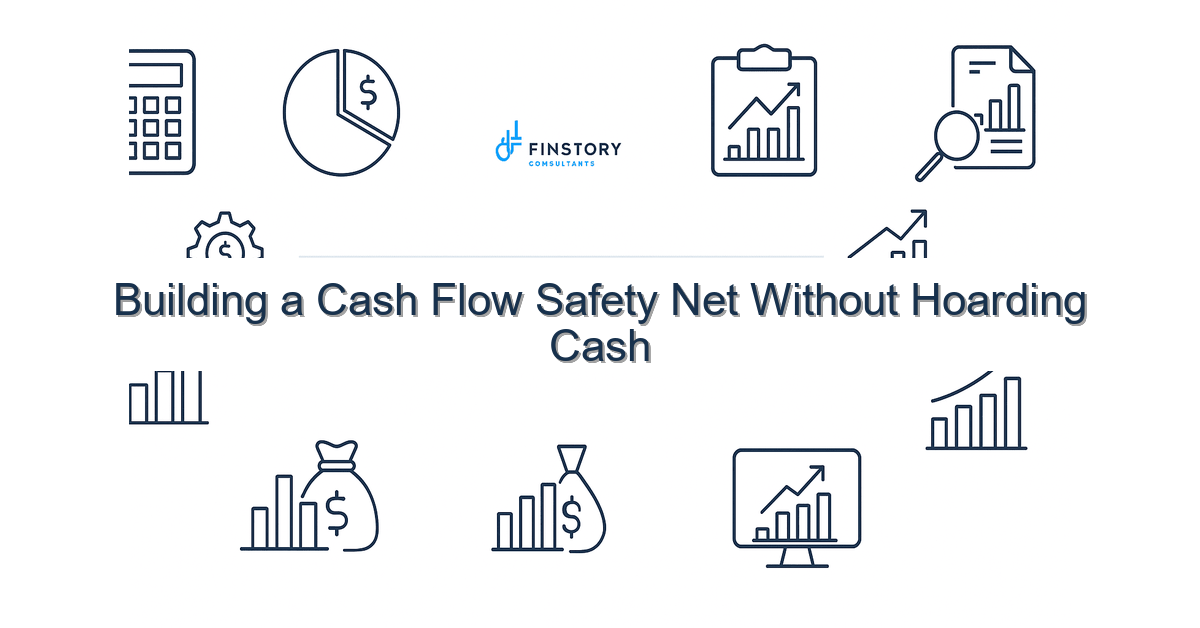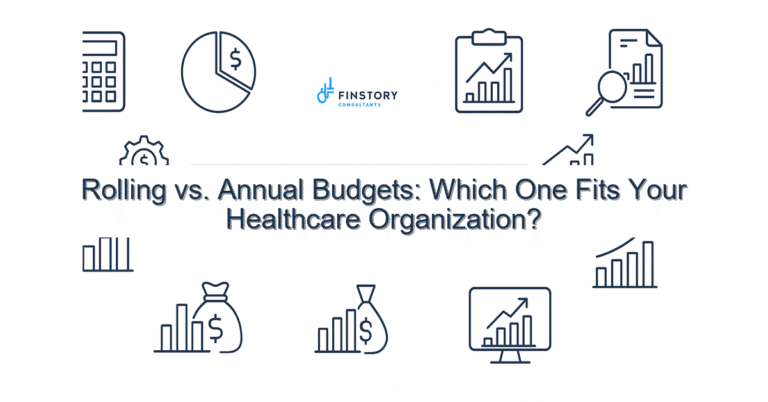Building a Cash Flow Safety Net Without Hoarding Cash
You’re juggling margins, staffing, and an unpredictable payer landscape. Keeping too much cash on the balance sheet feels safe, but it quietly costs you—capital idling where it can’t help care delivery.
Summary: Build a practical, dynamic cash safety net by combining shorter-term forecasts, operational levers, and smart liquidity tools. The result: reliable runway, lower borrowing costs, and working capital you can put to use improving care—without the security theater of hoarded cash.
What’s the real problem?
Healthcare leaders often treat cash as a binary choice: hoard it or run tight. The true challenge is maintaining real operational resilience while minimizing the financial drag of idle cash.
- Symptoms: weekly surprises in payroll or vendor payments despite a “healthy” bank balance.
- Symptoms: frequent use of short-term lines because the team didn’t see a seasonal cash gap early enough.
- Symptoms: excess cash earning near-zero returns, while capital projects get delayed.
- Symptoms: stress in board meetings over runway numbers that change dramatically month to month.
What leaders get wrong
It’s natural to default to hoarding. But that mistake shows up in a few predictable ways:
- Relying on monthly cash reports—too slow for today’s volatility. Monthly snapshots hide intra-month swings.
- Setting a single static cash target (e.g., X days of expenses) and never revisiting it. Targets need to breathe with operations.
- Treating liquidity as a treasury-only problem. Cash is an operational metric that crosses revenue cycle, supply chain, and HR.
- Overlooking low-cost alternatives—like committed lines, receivable finance, or better collections—because they feel complex.
A better approach
Think of a cash safety net as a layered, active system. Here’s a 4-step framework that’s practical and fast to implement.
- Build a 13-week rolling cash forecast. Update it weekly, not monthly. Focus on actual timing—when cash hits and when it goes out.
- Segment liquidity needs. Identify operational liquidity (payroll, vendors), cyclical gaps (payer seasonality), and strategic cash (CapEx, M&A). Allocate different tools to each bucket.
- Activate short-term tools. Use committed credit, receivables discounting, or payables optimization as alternatives to sitting cash. Keep a small reserve in liquid accounts and the rest productive.
- Operationalize follow-through. Tie weekly leadership reporting to 3 KPIs: forecast accuracy, net cash variance, and days of coverage by bucket. Escalate material deviations to a standing liquidity huddle.
Real-world story: A regional health system we worked with reduced their DSO by 8 days in six months by pairing a weekly 13-week forecast with targeted AR workflows. That shift turned what looked like a 60-day runway into a stable 90-day operational cushion—without meaningfully increasing bank balances.
Quick implementation checklist
- Stand up a 13-week rolling cash model this week; refresh it every Friday.
- Map the top 10 cash timing drivers (payroll, largest payers, vendor terms).
- Segment cash into operational, cyclical, and strategic buckets.
- Set a dynamic cash target: base + stress buffer + strategic reserve.
- Speak with your bank about a committed credit line or accordion feature.
- Run a quick AR triage: identify top 20% of accounts causing 80% of delays.
- Automate collections nudges for high-impact payers (phone, automated statements, EDI fixes).
- Publish a one-page weekly liquidity dashboard to leadership.
- Identify one non-core cash balance to redeploy into short-term investments or working capital.
What success looks like
Measure outcomes so you know this is working. Typical targets we aim for:
- Forecast accuracy within ±5% on a rolling 13-week basis.
- DSO improvement of 7–10 days within 3–6 months.
- Time to produce the weekly liquidity snapshot reduced to under 4 hours.
- Short-term borrowing costs reduced by 15–25% versus emergency draws.
- Working capital freed equal to 2–5% of annual operating revenue (redeployable to priority projects).
Risks & how to manage them
- Risk: Over-optimistic forecasts. Mitigation: Build conservative and stress scenarios (e.g., payer delays, volume dips); require sign-off on assumptions from revenue cycle leads.
- Risk: Operational disruption when changing payment terms or collections cadence. Mitigation: Pilot with a small payer cohort or vendor group; communicate changes clearly and stage rollouts.
- Risk: Over-leveraging via short-term credit. Mitigation: Use committed lines as insurance—draw only for planned, forecasted gaps; keep covenant headroom and reporting discipline.
Tools & data
This is where finance automation and clear reporting make the plan repeatable.
- Automate feeds from billing systems to your cash model to reduce manual input and errors.
- Use Power BI or equivalent to visualize the 13-week forecast, variance drivers, and payer trends for leadership reporting.
- Integrate AR aging, payer remittance timing, and payroll schedules so the model reflects operational reality.
- Set up automated alerts for unusual cash variances and covenant thresholds—don’t rely on memory.
Next steps
If you want a focused first milestone, I recommend this: build a minimum viable 13-week forecast and run it for four weeks with leadership review. That alone surfaces the biggest timing risks and gives you the data to decide whether to scale tools like committed lines or receivable financing.
If you’d like help, we can run a quick diagnostic, build the week-one model, and hand it to your team with clear SOPs—no heavy consulting overhead, just practical outcomes.
Work with Finstory. If you want this done right—tailored to your operations—we’ll map the process, stand up the dashboards, and train your team. Let’s talk about your goals.
📞 Ready to take the next step?
Book a 20-min call with our experts and see how we can help your team move faster.
Prefer email or phone? Write to info@finstory.net
or call +91 44-45811170.






